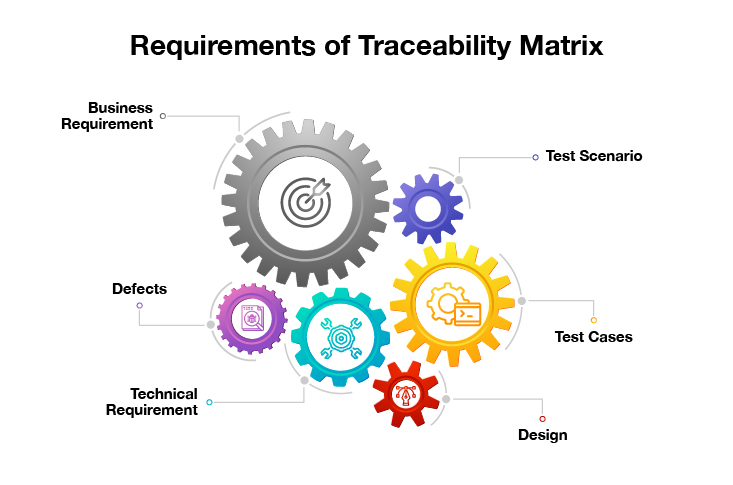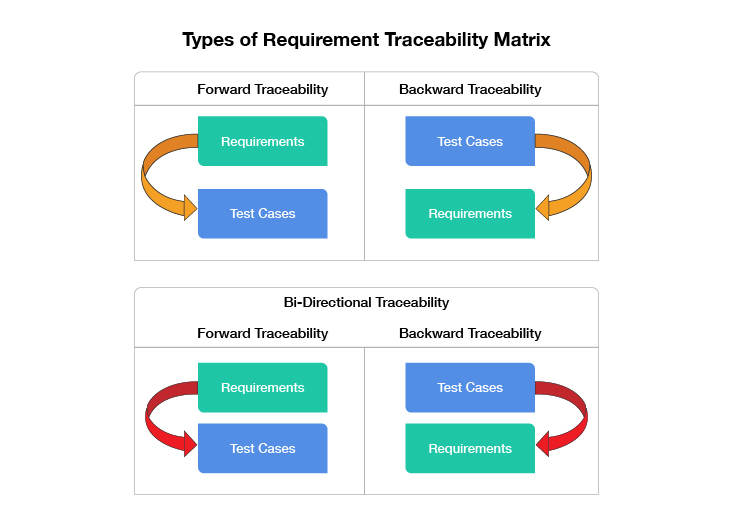What is the Requirement Traceability Matrix (RTM)?
A requirement Traceability Matrix is typically a spreadsheet that contains the business requirements with its complete test scenarios, and test cases. RTM is a single document constructed with the purpose of covering all test cases at one place and mapping them to respective requirements/functionalities. Using RTM, one can rest assured that when a new functionality is tested, all dependent functionalities/features of the application are also tested and verified.
Why is the Requirement Traceability Matrix (RTM) Important?
Behind every bug-free software is a QA who followed the requirement criteria by word!
The primary goal of RTM is to offer visibility into all the phases of software development, including design, creation, testing, delivery, and deployment. The higher your QAs have the ability to understand the requirement thoroughly and create positive and negative test cases, the better the chances to produce quality software. But how to ensure that every test case, positive and negative, is present while validating the final product? And what if you miss any of the requirements before market release? You turn to the Requirement Traceability Matrix.
It helps to:
- Simplify the defect classification for bigger projects
- Improve test case management by mapping a test case to its source requirement and identifying the defects
- Empower you to move through different project management tools to seamlessly trace the progress from the requirement to the defects
- Make sure to maintain a detailed and necessary documentation.
Parameters in the Requirement Traceability Matrix
In almost every case, an RTM is created in an excel sheet that contains all the necessary information about understanding the software requirements. Generally, it covers a few parameters that QAs and stakeholders want to monitor:
- Requirement ID and Priority
- Test Case Description corresponding to the requirement ID
- Test Case ID and Status (Pass/Fail)
Above is a basic example of what an RTM looks like. But there are many other parameters you can add to and track using RTM, such as test execution environment, defects found, defect status and ID, and requirement coverage status.
How to create a Requirement Traceability Matrix?
For creating a Requirement Traceability Matrix, the QA team needs to collect the necessary artifacts like Business Requirements, Test cases, Test Results, Test Status defect details, etc. Mostly, the spreadsheet is used to create an RTM where we can easily align all the above-mentioned artifacts & inter-relate with each other. Below is a requirement traceability matrix example, which is derived from sample business & functional requirements.
Business Requirement:
Below are some of the sample business requirements, that the QA team received from a client.
Business Requirement #90: Login process to a mail application
Business Requirement #91: Sending a mail
Functional Requirement:
Below mentioned functional requirements have been derived from the above business requirements.
Functional Requirement #90.1: Directly login with existing credentials
Functional Requirement #90.1: Creating new user & login with new credentials
Functional Requirement #91.1: Creating a new email & sending it.
Functional Requirement #91.2: Sending an email from Draft items
Functional Requirement #91.3: Replying to an inbox email
A sample RTM is given below.

Now we can see how the business & functional requirements are mapped to test cases. This helps the QA teams to ensure all the requirements are covered with all possible test cases & nothing is missed.
If any code changes / new functionalities are implemented due to requirement changes or bug fixes, RTM helps the QA team to identify the possible impact areas/test cases, where code changes have been implemented.
What are the 3 Types of Requirement Traceability Matrix?
Not every RTM document will work for you. And not every RTM is necessary for every software development and testing process. Here are the 3 different types of Requirement traceability that you should know about:
Forward Traceability
A forward matrix ensures that the project is progressing in the right direction. In simple words, we can say, “Forward Traceability maps the requirements to the test cases”. It helps to make sure that every single business requirement is correctly integrated into the product and that every requirement is thoroughly tested.
Backward Traceability
The backward or reverse traceability matrix is “mapping the test cases with its requirements”. This type of matrix helps us ensure that we are not expanding the goals of the testing by covering extra features or functionalities in test coverage that were not a part of the initial requirements.
Bi-Directional Traceability
This is the mix of both Forward and Backward traceability matrices.

Advantages of RTM
1. Confirms 100% test coverage.
2. Highlight any missing requirements and document inconsistency.
3. Gives complete “issues filed” and “test case execution” status.
4. Helps analyze and estimate the retest if any changes occur in the requirement.
